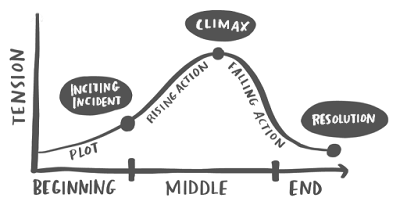What can you teach here?
The other day I was working with some English teachers. They had done good work in choosing their texts, all except for the group of teachers designing a unit for primary year 4, who wanted to work on a story but simply couldn't make up their minds about which text to use as a model. My co-trainer, Eva, suggested they should use a story called "The incredible bookeating boy". The teachers just loved it, but when it came to selecting the teaching points they were not very sure what to do...
If you read the story, you will probably find that it is written in the past tense, it uses some temporal linkers and it illustrates the use of combinatons of verb + infinitive or verb + -ing. But this is the same we would be doing in a traditional English lessons, where texts are models of language only. However, in the Literacy Approach, the focus is on the text, on how the text is constructed and why it works so well. And in this case, the book illustrates the story arc to perfection, so that, for me, this is clearly its main teaching point.
In fact, if you look at the stages the story goes through, you will find that the sentences - and pictures - mark the different steps in the story clearly:
It all began quite by mistake...
But then things started going not so well... (even the colour scheme changes here)
What was he to do?
Then, after a while, almost by accident... (See the parallel with the beginning? The colour scheme is still the same, but in the middle of the picture a door opens to a brighter colour.)
Now Henry reads all the time...
Compare with the stages in the following visual representation of the story arc:



Comments
Post a Comment